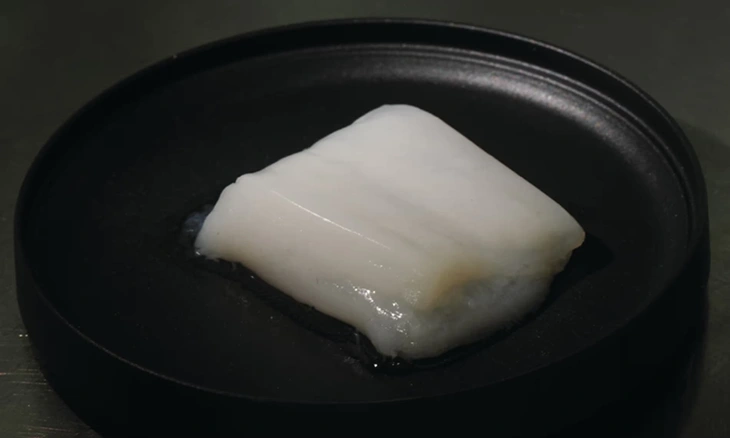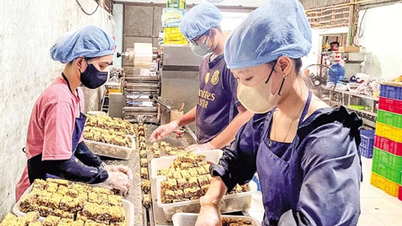
Lab-grown chicken meat - Photo: SHOJI TAKEUCHI/THE UNIVERSITY OF TOKYO
Researchers at the University of Tokyo recently announced a breakthrough in the production of artificial meat in the laboratory by creating small pieces of chicken meat in a device that can simulate blood vessels to provide nutrients and oxygen to artificial tissue.
According to IFLScience on April 17, it is not easy to create realistic tissues in the lab, especially when it comes to ensuring they receive enough oxygen and nutrients. There are many ways to solve this problem, but most current methods cannot be applied evenly on a large scale.
To address this problem, the team developed a new tool called a perfusion hollow fiber bioreactor. The system, which consists of tiny tube-like fibers, acts like artificial blood vessels to deliver blood and nutrients throughout the tissue.
These fibers not only keep the cells alive, but also help them grow in the right direction, thanks to the “micro-anchors” that hold everything in place. This technology gives lab-grown chicken meat a stronger muscle structure and improves both texture and flavor.
Thanks to that, the team was able to create chicken pieces up to 2cm long, 1cm thick and weighing about 11g with more than 1,000 hollow fibers running through it.
The team also set up a robotic system to place these hollow fiber networks. This could lead to full automation of this type of chicken culture method in the near future. It could also take the concept of “processed food” to new heights.
The team believes their technology offers a sustainable alternative to traditional chicken. With improved taste and texture, the team hopes to accelerate the commercial viability of cultured meat in the future.
Additionally, the technology could pave the way for growing other types of meat besides chicken, such as pork, beef and fish in the lab, according to the Guardian . The technology also has potential applications for organ production.
In addition, edible fibers also open up other possibilities, such as fortifying meat with zinc and selenium to boost immunity in the elderly. The team is also considering adding masala sauce to the fibers to enhance the flavor of chicken pieces.
With sufficient funding, the team believes that products based on this technology could be on the market in 5-10 years.
The study was published in the journal Trends in Biotechnology .
Source: https://tuoitre.vn/dot-pha-san-xuat-thit-ga-nhan-tao-20250418102805198.htm





![[Photo] Vietnam and Sri Lanka sign cooperation agreements in many important fields](https://vphoto.vietnam.vn/thumb/1200x675/vietnam/resource/IMAGE/2025/5/5/9d5c9d2cb45e413c91a4b4067947b8c8)


















![[Photo] President Luong Cuong and Sri Lankan President Anura Kumara Dissanayaka visit President Ho Chi Minh relic site](https://vphoto.vietnam.vn/thumb/1200x675/vietnam/resource/IMAGE/2025/5/5/0ff75a6ffec545cf8f9538e2c1f7f87a)

































![[Photo] President Luong Cuong presided over the welcoming ceremony and held talks with Sri Lankan President Anura Kumara Dissanayaka](https://vphoto.vietnam.vn/thumb/402x226/vietnam/resource/IMAGE/2025/5/5/351b51d72a67458dbd73485caefb7dfb)































Comment (0)